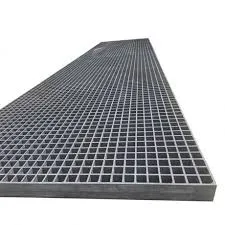
-
 Afrikaans
Afrikaans -
 Albanian
Albanian -
 Amharic
Amharic -
 Arabic
Arabic -
 Armenian
Armenian -
 Azerbaijani
Azerbaijani -
 Basque
Basque -
 Belarusian
Belarusian -
 Bengali
Bengali -
 Bosnian
Bosnian -
 Bulgarian
Bulgarian -
 Catalan
Catalan -
 Cebuano
Cebuano -
 China
China -
 China (Taiwan)
China (Taiwan) -
 Corsican
Corsican -
 Croatian
Croatian -
 Czech
Czech -
 Danish
Danish -
 Dutch
Dutch -
 English
English -
 Esperanto
Esperanto -
 Estonian
Estonian -
 Finnish
Finnish -
 French
French -
 Frisian
Frisian -
 Galician
Galician -
 Georgian
Georgian -
 German
German -
 Greek
Greek -
 Gujarati
Gujarati -
 Haitian Creole
Haitian Creole -
 hausa
hausa -
 hawaiian
hawaiian -
 Hebrew
Hebrew -
 Hindi
Hindi -
 Miao
Miao -
 Hungarian
Hungarian -
 Icelandic
Icelandic -
 igbo
igbo -
 Indonesian
Indonesian -
 irish
irish -
 Italian
Italian -
 Japanese
Japanese -
 Javanese
Javanese -
 Kannada
Kannada -
 kazakh
kazakh -
 Khmer
Khmer -
 Rwandese
Rwandese -
 Korean
Korean -
 Kurdish
Kurdish -
 Kyrgyz
Kyrgyz -
 Lao
Lao -
 Latin
Latin -
 Latvian
Latvian -
 Lithuanian
Lithuanian -
 Luxembourgish
Luxembourgish -
 Macedonian
Macedonian -
 Malgashi
Malgashi -
 Malay
Malay -
 Malayalam
Malayalam -
 Maltese
Maltese -
 Maori
Maori -
 Marathi
Marathi -
 Mongolian
Mongolian -
 Myanmar
Myanmar -
 Nepali
Nepali -
 Norwegian
Norwegian -
 Norwegian
Norwegian -
 Occitan
Occitan -
 Pashto
Pashto -
 Persian
Persian -
 Polish
Polish -
 Portuguese
Portuguese -
 Punjabi
Punjabi -
 Romanian
Romanian -
 Russian
Russian -
 Samoan
Samoan -
 Scottish Gaelic
Scottish Gaelic -
 Serbian
Serbian -
 Sesotho
Sesotho -
 Shona
Shona -
 Sindhi
Sindhi -
 Sinhala
Sinhala -
 Slovak
Slovak -
 Slovenian
Slovenian -
 Somali
Somali -
 Spanish
Spanish -
 Sundanese
Sundanese -
 Swahili
Swahili -
 Swedish
Swedish -
 Tagalog
Tagalog -
 Tajik
Tajik -
 Tamil
Tamil -
 Tatar
Tatar -
 Telugu
Telugu -
 Thai
Thai -
 Turkish
Turkish -
 Turkmen
Turkmen -
 Ukrainian
Ukrainian -
 Urdu
Urdu -
 Uighur
Uighur -
 Uzbek
Uzbek -
 Vietnamese
Vietnamese -
 Welsh
Welsh -
 Bantu
Bantu -
 Yiddish
Yiddish -
 Yoruba
Yoruba -
 Zulu
Zulu
Durable Solutions with Fiberglass Reinforced Plastic Piping for Modern Infrastructure Needs
Fiberglass Reinforced Plastic Pipe A Comprehensive Overview
Fiberglass reinforced plastic (FRP) pipes are increasingly gaining popularity in various industries due to their unique combination of strength, durability, and resistance to corrosion. This article explores the characteristics, benefits, applications, and future trends of fiberglass reinforced plastic pipes, highlighting why they are becoming the preferred choice for many engineering projects.
What is Fiberglass Reinforced Plastic Pipe?
Fiberglass reinforced plastic pipes comprise a thermosetting resin matrix, typically a polyester or vinyl ester, combined with glass fibers that impart strength and rigidity. The manufacturing process involves layering fiberglass within the resin to provide a lightweight yet strong material that can withstand high pressures and harsh environmental conditions.
Key Characteristics
1. Corrosion Resistance One of the standout features of FRP pipes is their resistance to a variety of chemicals, making them suitable for transporting aggressive fluids like acids and salts. Unlike traditional materials such as steel or concrete, fiberglass does not rust or corrode, leading to lower maintenance costs over time.
2. Lightweight FRP pipes are significantly lighter than metal and concrete pipes. This factor simplifies transportation, handling, and installation, ultimately reducing labor costs and project timelines.
3. High Strength-to-Weight Ratio Despite their lightweight nature, fiberglass pipes possess impressive tensile and compressive strengths. This strength allows them to be used in high-stress applications while maintaining structural integrity.
5. Smooth Interior Surface The smooth finish on the inside of FRP pipes minimizes friction loss, enhancing the flow rate and reducing energy costs in pumping systems.
Benefits of Using FRP Pipes
- Cost-Effectiveness While the initial investment may be higher than traditional materials, the longevity and low maintenance requirements of FRP pipes result in lower lifecycle costs.
fiberglass reinforced plastic pipe

- Environmental Impact FRP pipes are less harmful to the environment. Their longevity means they do not need to be replaced frequently, and their resistance to chemicals minimizes the risk of leaks that can result in environmental contamination.
- Versatility FRP pipes can be manufactured in various sizes and shapes to meet specific project requirements, making them suitable for a range of applications.
Applications of FRP Pipes
Fiberglass reinforced plastic pipes are utilized in numerous sectors, including
- Water and Wastewater Management FRP pipes are ideal for sewage systems, stormwater drainage, and water treatment facilities due to their corrosion resistance and durability.
- Oil and Gas Industry The transportation of corrosive fluids and gases in oil and gas operations benefits from the chemical resistance offered by FRP pipes.
- Chemical Processing In factories where aggressive chemicals are handled, fiberglass pipes provide a safe and reliable solution for transporting these substances.
- Power Generation FRP pipes are used in cooling systems and flue gas desulfurization applications, contributing to efficient power generation facilities.
Future Trends
The demand for fiberglass reinforced plastic pipes is anticipated to grow, driven by an increasing focus on sustainable materials and infrastructure resilience. Innovations in manufacturing techniques and material compositions are likely to enhance the performance characteristics of FRP pipes. Additionally, the shift towards smart infrastructure will lead to the integration of sensors in FRP pipes to monitor performance and detect issues proactively.
Conclusion
Fiberglass reinforced plastic pipes represent a significant advancement in piping technology, offering unmatched benefits that traditional materials cannot provide. As industries continue to seek durable, cost-effective, and environmentally friendly solutions, FRP pipes are poised to play a crucial role in the future of construction and infrastructure development. Their versatility and reliability make them an essential choice for engineers and project managers alike, ensuring the safety and efficiency of fluid transport systems across various applications.









